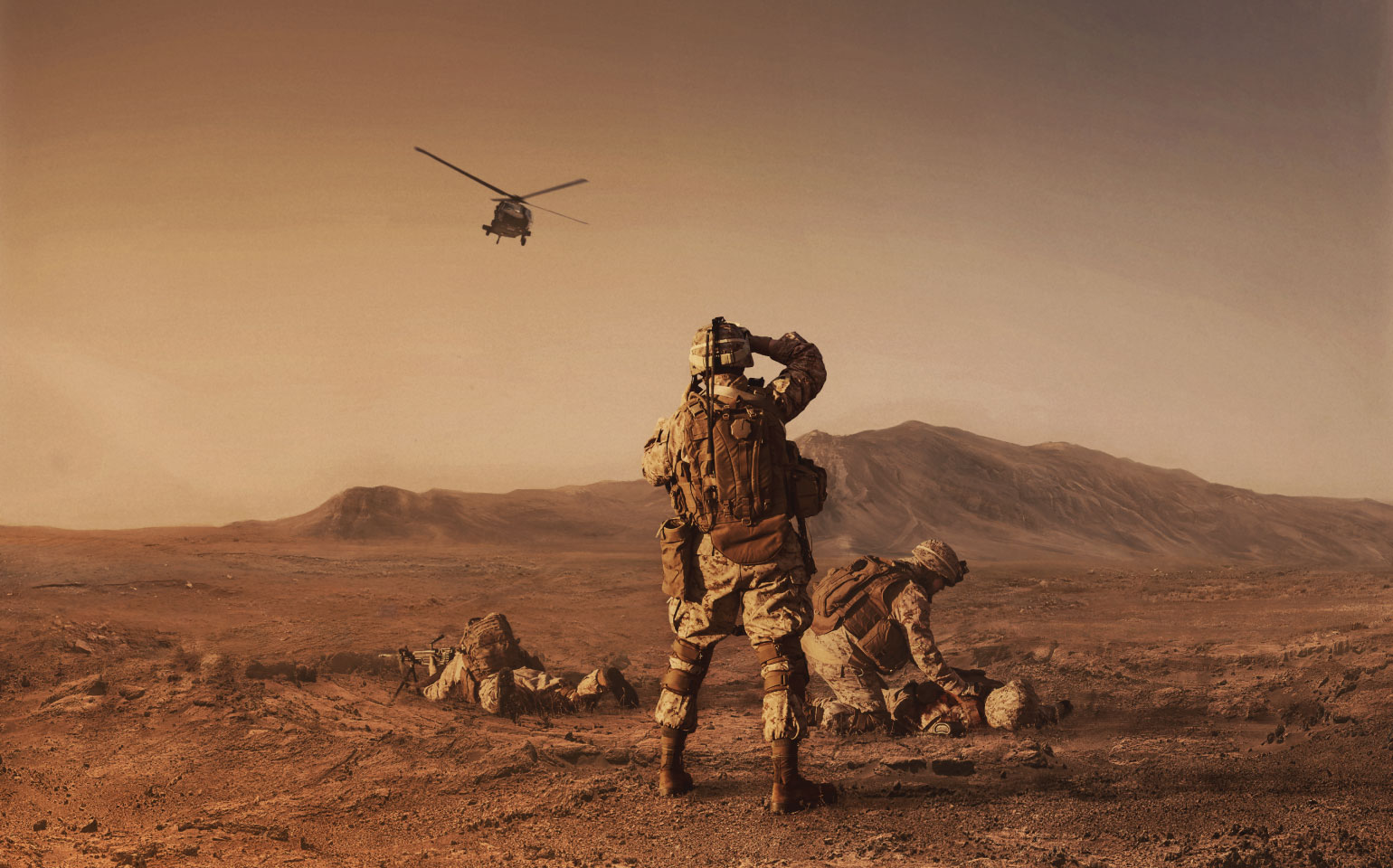We don’t always think of product design having a hand in life or death consequences. In some industries, the application of design thinking to simplify a stressful process makes that difference. This can be clearly seen when designing certain medical devices and weapons alike.
In my ear, I hear the voice of a combat medic I’m working with.
“Don’t stab too fast. You’ll need to drive down with your body weight to make sure you puncture the bone.”
In my right hand are ten big needles protruding from a thick, red plastic rube. It’s a sternal intraosseous infusion device or “sternal IO,” used for fast access to the vascular system when placing a central line is not advisable.
A sternal IO is used to puncture a patient’s sternum to allow a critical fluid infusion to enter the body directly via the bone marrow. It’s a helpful tool for medics, but it still has some problems from my perspective. Problems I’m trying to solve. Step one is to gain some ethnographic immersion by stabbing this rubber torso in front of me. Feeling the plastic “bones” underneath the rubber “skin” strain against the force I’m exerting brings back some vivid memories.
I know firsthand how violent life-saving efforts can become. My first job as a Red Cross lifeguard gave me valuable exposure. As a competitive swimmer, it was a great gig … I got free lane time during my breaks and use of the gym after my shift. It was also a baptism of fire, with nearly 100 rescues my first summer. Many days were marked by adrenaline-fueled leaps into the churning chlorinated water packed with kids of all ages.
The following year I performed CPR for the first time on a victim whose heart had stopped. Ongoing training warned me that this would be visceral, but feeling a rib cage break under my hands was still very unsettling.
Experiences like this toughened me physically and mentally. It was also my first rehearsal in design research. Understanding from up close the stresses professional rescuers go through, I realized that many of the tools we had seemed inadequate to help save lives.
In extreme situations, all but the essentials fall away. You’re left with gross motor skills, fight or flight responses, and conditioned training to get the job done. Sometimes sensory exclusion takes place—the heart races and adrenaline floods the body.
One of the first things I worked on as a designer was a spine board that would be more useful during water rescues. I kept my experiences of extreme stress in mind as I created and refined. By incorporating shape coding, sensible ergonomics, and innovative features, the new design was easier to handle in both turbulent and deep water. It required no fine motor skills to quickly secure a patient.
Years later, I discovered that the same markers of extreme physiological stress occur when operators use firearms in violent situations, such as in law enforcement or combat. I learned that the reach distances and activation modes on a contemporary firearm are carefully measured and tested. The goal being to balance ease of use while guarding against human error. Sound ergonomics at its best.
There are a host of reasons that certain combat rifles have become ubiquitous throughout the world, but one of the big ones is that they feel more natural to use under extreme duress. The same can be said in the design evolution of the Automated Electronic Defibrillator or AED. Or of the modern ratchet-action tourniquet.
In the moments when these objects are relied upon, design is life or death.
As with so many other things, design is a powerful tool that must be used responsibly. I’ve been lucky in my own career to see the different kinds of impact design can have. Remember that sternal IO device? Many of the concepts I proposed included operating mechanisms inspired by ones found on modern firearms. Many days, being a good designer feels a lot like being a good lifeguard. Our job is to be watchful, skilled, and ready. And when design is life or death, it’s our duty to act deliberately with the intention of improving lives.
